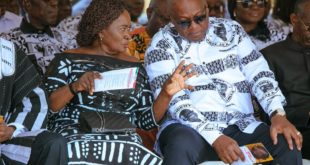Standard and Poor’s (S&P) Global Ratings, a credit rating agency, has lowered Ghana’s foreign and domestic currency sovereign ratings from B-/B to CCC+/C with a negative outlook, further downgrading its debt into speculative territory.
Ghana was downgraded by Moody’s in February to Caa1 with a stable outlook.
The outlook for Ghana, according to S&P, is unfavorable because of the country’s few commercial financing choices and restrictive external and fiscal buffers.
The country is currently under risk of nonpayment due to S&P C downgrading and is depending on favourable business, financial, and economic conditions.
The COVID-19 outbreak and the crisis in Russia, according to the ratings agency, have exacerbated Ghana’s fiscal and external imbalances.
According to the statement, “a number of factors, including nonresident outflows from domestic government bond markets, dividend payments to foreign investors, and higher costs for refined petroleum products, have driven demand for foreign currency higher.”
According to S&P, Ghana’s inability to access the Eurobond markets has had an impact on the country’s economy.
The country’s debt to GDP ratio is around 80%.
The Bank of Ghana estimates that the public debt of the nation climbed from 76.6 percent of GDP (GH351.8 billion) at the end of December 2021 to 78.3 percent of GDP (GH393.4 billion) at the end of June 2022.
Domestic debt made up GH190.1 billion (37.8 percent of GDP) of the overall debt portfolio, while external debt made up GH203.4 billion (40.5 per cent of GDP).
The International Monetary Fund (IMF) designated Ghana as having a “high risk of debt distress” in April 2015 when it authorized a $918 million facility for Ghana, indicating that the nation was unable to pay its debts.
The IMF facility started a program to manage the economy of the nation and to restrain government spending in order to maintain fiscal responsibility.
However, the government hastily abandoned the initiative.
It has been determined that throughout the period of ten years between 2011 and 2020, the nation used petroleum revenues to service its debt by allocating 74% of withdrawals from the Ghana Stabilization Fund to debt repayment.
According to the 2022 African Economic Outlook, Africa’s recovery efforts are in danger and there are fewer chances for rapid and sustainable economic growth.
The African Development Bank (AfDB) report also noted that despite growth recovery and debt relief initiatives like the Debt Service Suspension Initiative (DSSI), the Common Framework, and the International Monetary Fund’s general allocation of $650 billion equivalent in Special Drawing Rights, Africa’s debt-to-gross domestic product (GDP) ratio will remain above pre-pandemic levels (SDRs).
Even while these actions have increased external buffers, which has reduced liquidity pressures in many countries, the report claims that they have not eliminated debt vulnerabilities because as of February 2022, 23 African nations, including Ghana, were either in or at risk of debt distress.
Source: Ghanatodayonline.com
 Ghanatodayonline.com News, Politics, Health, Education & More
Ghanatodayonline.com News, Politics, Health, Education & More



